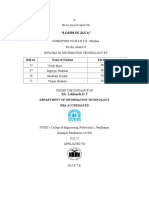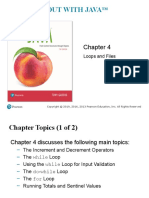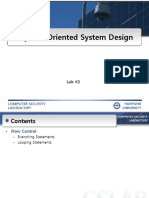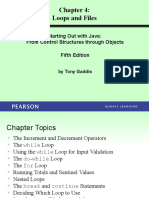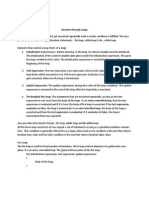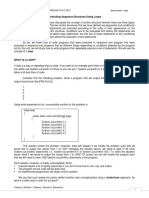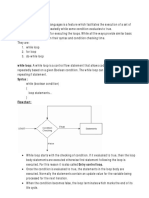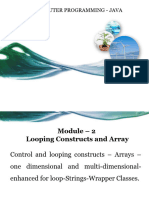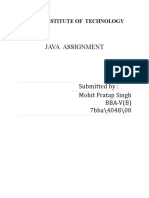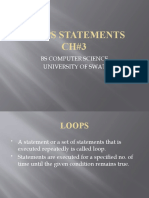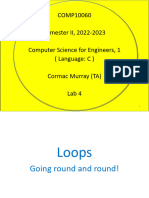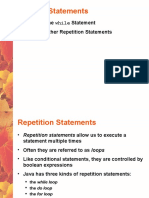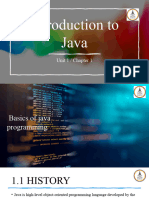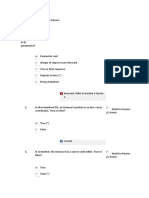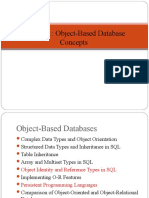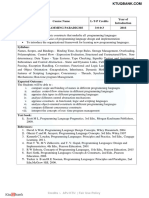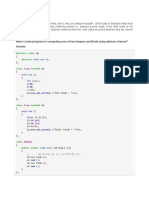0% found this document useful (0 votes)
53 views29 pagesUnit 1-Chapter 4 - Control Structures
The document discusses different types of control structures in Java including selection statements like if/else and switch, iteration statements like for, while and do-while loops, and jump statements like break, continue and return. It provides syntax and examples for each control structure.
Uploaded by
VIJAYCopyright
© © All Rights Reserved
We take content rights seriously. If you suspect this is your content, claim it here.
Available Formats
Download as PPTX, PDF, TXT or read online on Scribd
0% found this document useful (0 votes)
53 views29 pagesUnit 1-Chapter 4 - Control Structures
The document discusses different types of control structures in Java including selection statements like if/else and switch, iteration statements like for, while and do-while loops, and jump statements like break, continue and return. It provides syntax and examples for each control structure.
Uploaded by
VIJAYCopyright
© © All Rights Reserved
We take content rights seriously. If you suspect this is your content, claim it here.
Available Formats
Download as PPTX, PDF, TXT or read online on Scribd
/ 29



